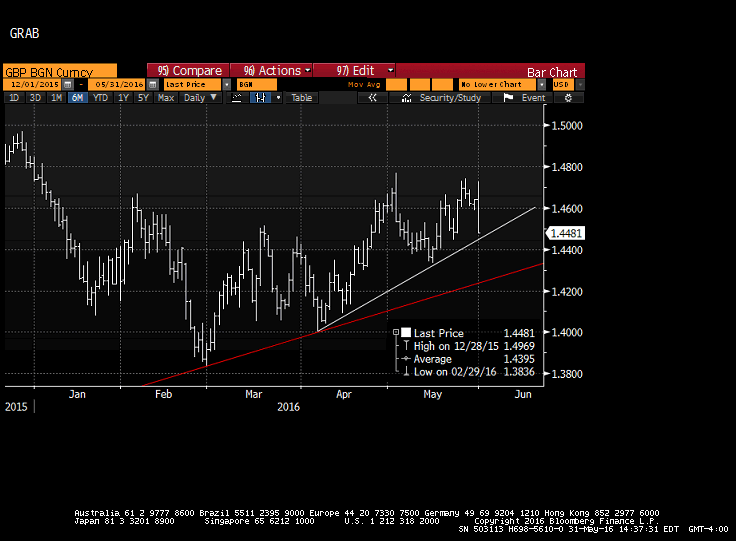Many market participants began talking as if it were nearly a done deal that the UK will vote to stay in the EU. It is as if Winston Churchill’s witticism that American can be counted on to do the right thing after they have exhausted the alternatives really applied to the UK.
We noted that despite sterling’s higher trend, the options market, where contingent risk is best expressed, was still showing high levels of stress and uncertainty. Insurance against Brexit was still be sought, and investors were paying up for it.

While we are anticipating a near-term pullback in the US dollar after a four-week advance, we expected sterling to underperform. We warned of a test on $1.45 and recognized the risk of further downside potential. After initially rising to three-day highs near $1.4725, sterling dramatically reversed course amid a couple of polls that showed those wanting to leave the EU pulling slightly ahead.
Sterling has been sold to a six-session low and has yet to sustain even modest upticks. As the Great Graphic, created on Bloomberg, illustrates, Sterling has approached a two-month trendline (white line) that comes in near $1.4440. Below there, the mid-May low near $1.4330 comes into view. The trendline drawn off the year’s low, thus far set in February (red line) is found near $1.4240 at the end of the week. However, the $1.4330 area may correspond to a neckline of a double top pattern, the measuring objective of which is a little below $1.39.
The main economic data from the UK this week is in the form of the three PMIs. The readings are expected to be fairly stable. The BOE has argued that the recent softness of the UK economy is due to Brexit. We are not convinced this is the case. It is difficult to distinguish noise from the signal in high frequency data, and the UK economy appeared to be slowing prior to the focus on the referendum. The eight-quarter average growth peaked near 0.7% in Q4 14 and H1 15 and has slipped back to 0.6% for the last three-quarters. The BOE clearly does not want the UK to leave the EU, but it needs to be careful how it makes its arguments or its risks its credibility of objective economic analysis.









Leave A Comment